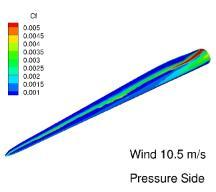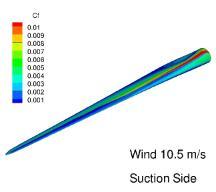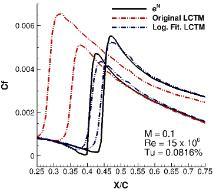Transition Modelling
|
In many engineering applications, flow computations without considering the transition from laminar to fully turbulent flow may result in incorrect predictions. At the University of Glasgow CFD Lab, transitional model based on the intermittency concept are implemented in the HMB3 code and constantly developed to takle laminar to turbulent transition across a wide range of applications. |
|
|
|
|
Direct Numerical Simulation, and sometimes Large Eddy Simulation, are probably the most suitable approaches for transition prediction. However, the computational cost of these methods is too high for routine engineering applications, and are used mainly for research purpose. The linear stability approaches, such as the eNmethod, have been successfully used to predict transition for a wide range of test cases, but their complexity makes them difficult to implement in modern Computational Fluid Dynamics solvers. An alternative to this is to use the concept of intermittency, which represents the fraction of time that the flow is turbulent during the transition phase.
Many correlations, which usually relate the transition momentum thickness Reynolds number to turbulence intensity and the pressure gradient, have been proposed in the literature to predict the onset location. They are relatively easy to calibrate and can be developed for the different transition mechanisms such as bypass, natural, cross-flow and separation induced transition. However, these models typically require information on integral properties whose evaluation are not well adapted to massively parallel computations. For these reasons, the Local-Correlation based Transition Modelling (LCTM) concept was proposed by Menter et. al. Thanks to its relative simplicity, relative to linear stability approaches, and promising results, the Local-Correlation based Transition Modelling concept represents a valid way to include transitional effects into practical CFD simulations.
Contacts
Prof. G. Barakos George.Barakos@Glasgow.ac.uk
Dr. S. Colonia Simone.Colonia@Glasgow.ac.uk
Publications
- Colonia S., Leble V., Steijl R. and Barakos G. N., Assessment and Calibration of the y-Equation Transition Model for a Wide Range of Reynolds Numbers at Low Mach. AIAA Journal, Under review.
- Colonia S., Steijl R. and Barakos G. N., Calibration of the γ-Equation Transition Model for High Reynolds Flows at Low Mach. The Science of Making Torque from Wind, TORQUE 2016, 5-7 October 2016, Munich (Germany).






